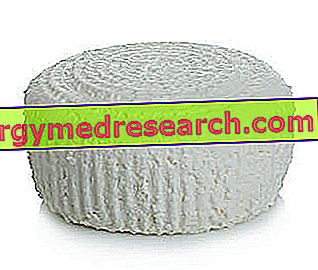Related articles: Yellow fever
Definition
Yellow fever is an infectious disease caused by a Flavivirus, transmitted to humans by the bite of infected mosquitoes belonging to the genus Aedes .
Yellow fever is endemic in sub-Saharan Africa and in the equatorial and tropical regions of Central and South America. In urban environments, the species that mostly intervenes in the transmission of the disease is Aedes aegypti . However, in forest areas, other mosquito species (genus Hemagogus ) can also act as vectors.
Yellow fever, therefore, is maintained in nature thanks to an urban cycle (mosquitoes become infected about 2 weeks earlier, feeding on the blood of a person with viremia) and a sylvan cycle (insects acquire the virus from wild primates). In South America, the incidence is higher during the peak rainfall season, while in Africa the incidence is highest during the late rainy season and the initial dry season. In epidemic manifestations, mortality due to yellow fever can reach 50%.
Most common symptoms and signs *
- Anuria
- Apathy
- Redness of the face
- Asthenia
- bradycardia
- Chills
- Coma
- Convulsions
- Neck pain
- Pain in the upper part of the abdomen
- Muscle pains
- Bruising
- Hematemesis
- Gastrointestinal hemorrhage
- Ease of bleeding and bruising
- Temperature
- Sore legs
- hyperkalaemia
- Hypoglycemia
- Jaundice
- Lethargy
- Leukopenia
- Backache
- Headache
- Melena
- Nausea
- Eyes reddened
- oliguria
- petechiae
- Proteinuria
- itch
- Water retention
- Nosebleeds
- Bleeding gums
- Hiccup
- Confusional state
- Constipation
- Dizziness
- He retched
Further indications
Yellow fever can manifest itself with various levels of gravity: in fact there are forms that run asymptomatically, mild or very serious.
The incubation period lasts 3-6 days. Onset is sudden, with a fever of 39-40 ° C, chills, headache, dizziness and muscle pain (especially in the neck, back and legs). In yellow fever, the heart rate, often rapid at the beginning, from the second day typically becomes low, in a discordant way with respect to the rise in body temperature (sign of Faget). Other common symptoms include reddening of the face, conjunctival hyperaemia, nausea, vomiting, constipation, severe prostration, irritability and a decrease in the number of white blood cells (leukopenia).
In most cases, yellow fever tends to resolve after this stage, with progression to convalescence within a week of symptom onset.
In severe cases, however, the fever goes into remission, only to reappear after a few hours or days. At this stage, characteristic signs such as jaundice, severe albuminuria and epigastric pain occur. In addition, haemorrhagic manifestations (petechiae and bleeding from the nose, gums and gastro-intestinal tract) appear or accentuate. In the terminal phase of the most severe form of yellow fever, called malignant, delirium, convulsions, coma, renal and hepatic insufficiency (coagulopathy, severe jaundice, etc.) occur.
The diagnosis is based on blood count, urinalysis, viral cultures and serological tests. Albuminuria helps differentiate yellow fever from hepatitis. The treatment is above all supportive. Prevention is based on vaccination and vector control through periodic disinfestation interventions. Furthermore, to limit mosquito bites, it is possible to use insecticides containing dietiltoluamide (DEET), mosquito nets and protective clothing.



